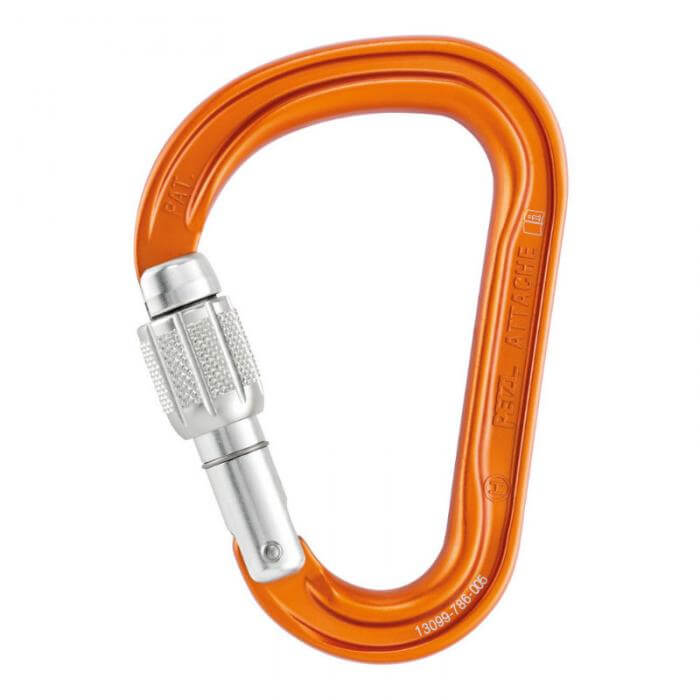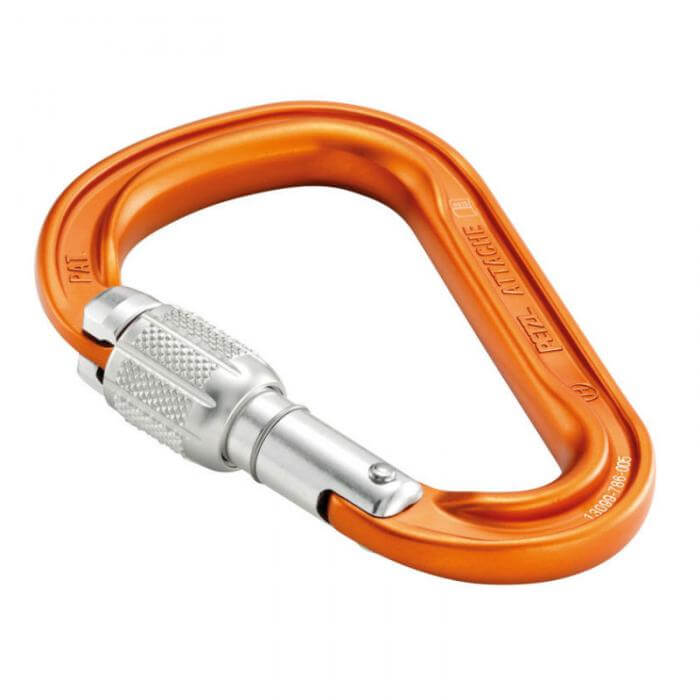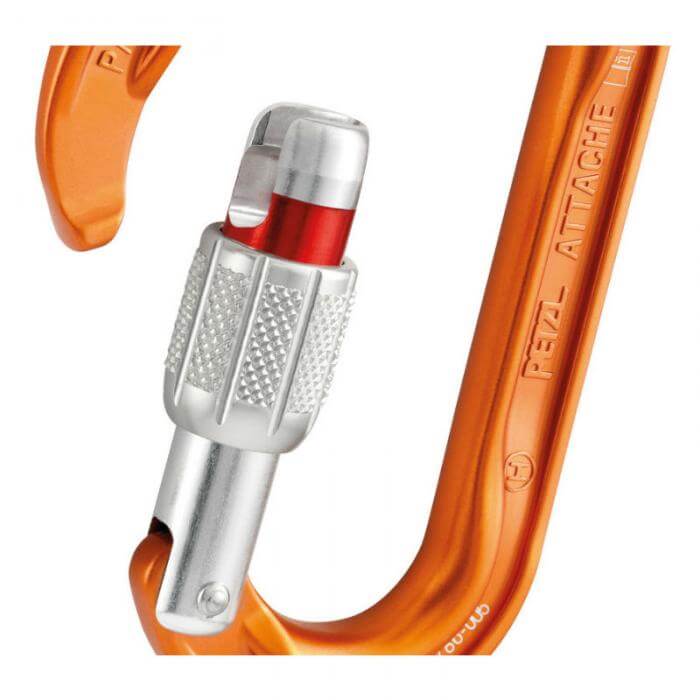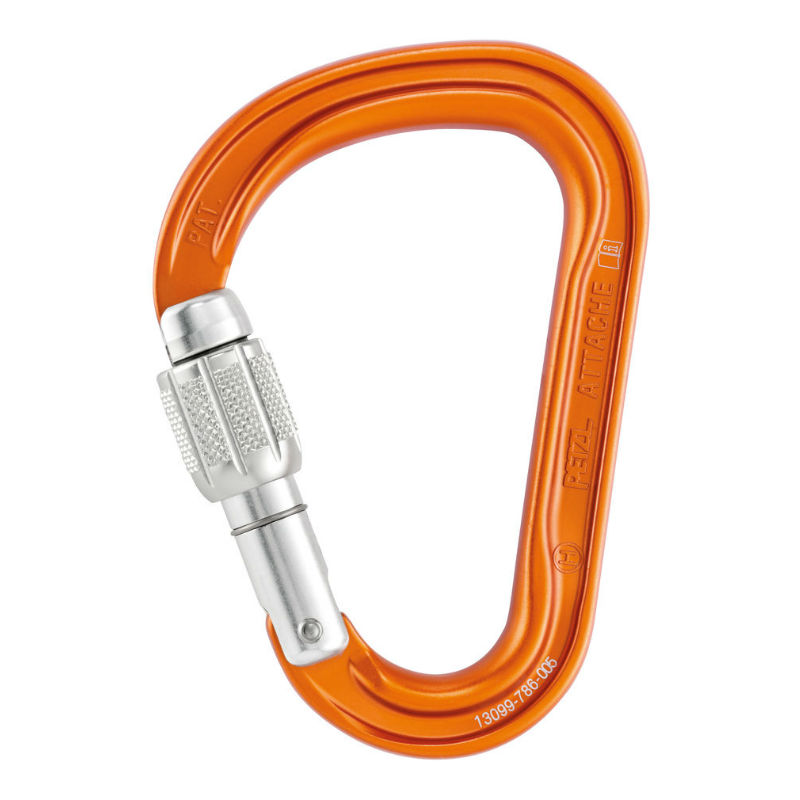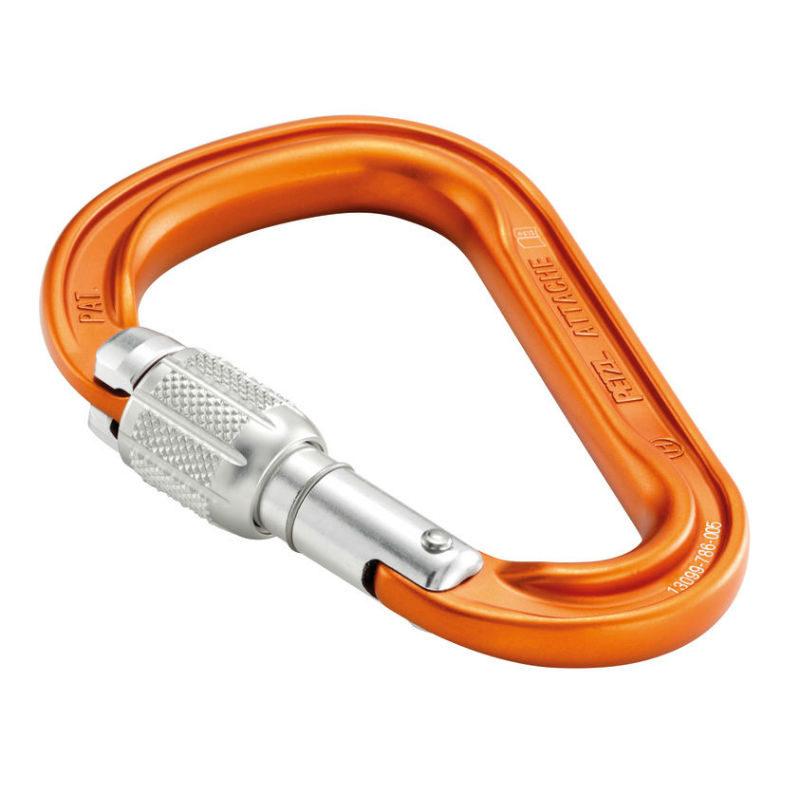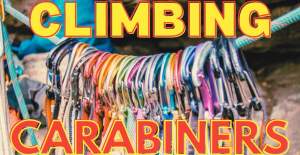Attache 2023
Description
Thanks to its compact shape and SCREW-LOCK locking system, the ATTACHE is designed for multiple uses related to belaying: connecting a belay system to a harness, belaying with a Munter hitch... It has an H cross section to reduce weight, as well as the Keylock system to avoid the carabiner snagging during maneuvers.
Carabiner optimized for lightness and durability:
- very compact shape is ideal for belay stations
- H-shaped cross section offers an improved strength/weight ratio
- wider contact surfaces for better rope glide and reduced wear on the carabiner
Easy to use, for efficient handling:
- nose and Keylock system helps avoid the carabiner snagging during maneuvers
- carabiner designed for better rope glide and to ensure good positioning of the belay device
- shape adapted for easy tying or untying of a clove hitch
Specifications
Material(s) : aluminum
Thanks to its compact shape and SCREW-LOCK locking system, the ATTACHE is designed for multiple uses related to belaying: connecting a belay system to a harness, belaying with a Munter hitch... It has an H cross section to reduce weight, as well as the Keylock system to avoid the carabiner snagging during maneuvers.
Carabiner optimized for lightness and durability:
- very compact shape is ideal for belay stations
- H-shaped cross section offers an improved strength/weight...
Retail price
This Product is Hard to Find.
We don’t know where you can buy this item online in the US. We’ll continue to check all the major retailers and will update this page as soon as we find one.
If you know where to find this online in the US, let us know, and we’ll add the link.

Weight (g)  |
56 g |
Shape  |
Pear / HMS |
Locking  |
Screw |
Straight or Bent  |
Straight |
Full Size  |
Yes |
Keylock  |
Yes |
Solid or Wire  |
Solid |
Gate Opening  |
24 mm |
Number of Colors  |
1 |
Lock Indicator  |
Yes |
Strengths (kN)  | |
Great belay/anchor carabiner
by Benjamin VanderStouw on 04/7/2020Good, but the old one was better!
by zackskis on 03/29/2020The most wanted carabiners tend to be light and/or expensive carabiners. The most owned carabiners tend to be carabiners that are easy to find at most climbing shops. Black Diamond would dominate the most owned list if they had not completely changed their carabiner lineup in 2020.
The Petzl Attache has been one of the most popular locking carabiners on the market for a long while, and it will continue to be so, thanks to its light weight, versatility and performance in most all tasks it was used in. It is a perfect choice for users looking to retain all the functionality that they expect from a full-sized locker, but at a fraction of the weight for those endeavors where shaving every ounce is critical, as well as for the everyday climber who wants a quality locking carabiner for their safety systems.
The redesigned Petzl Attache is a nice addition to the Petzl line, but is not suited to every use. For top-rope anchors, or for casual cragging, larger round-stock carabiners are a better choice as they are more durable. But for multi-pitch climbing where space and weight are more important, the Attache is a good choice.
Warning: This video is dubbed in English. If you're getting antsy, skip to section 7:40-8:15 for one of the most interesting parts, where they show a hardware specific camera inspection.


